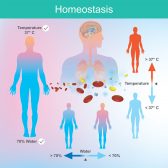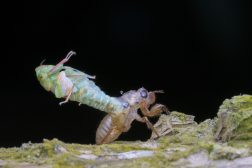Definition
noun, plural: pinworms
A small nematoid worm that inhabits the rectum of the human host
Supplement
Pinworms are small nematodes and are responsible for the intestinal infection in humans. They appear as small thread-like worms (thus, are also called threadworms) and are approximately 3-5 mm in length. They are thin and whitish in color. Host harboring pinworms complains of anal itching that is worse at night when the female worm migrates to the anus to lay its eggs. The pinworms can be seen at the anal opening or in the stools.
One way of diagnosing pinworm infestation is the tape test wherein the sticky side of the tape is placed across the anal opening for several seconds and then transferred to a glass slide for microscopic observation of pinworm eggs. The pinworm egg is about 50-60 μm by 20-30 μm. It has a thick shell flattened on one side.1 The larvae are typically 140-150 μm long. The adult male is about 2-5 mm in length whereas the adult female is about 8-13 mm in length. The female pinworm is longer than the male and has a sharply pointed posterior end.
The genus Enterobius includes all pinworms. Some of the known species of pinworms described are E. vermicularis (human pinworm) and E. anthropopitheci (primate pinworm). E. vermicularis is formerly called Oxyurias vermicularis. Infestation with Enterobius is called enterobiasis.
Scientific classification:
- Kingdom: Animalia
- Phylum: Nematoda
- Class: Secernentea
- Order: Oxyurida
- Family: Oxyuridae
- Genus: Enterobius
Also called:
See also:
- nematode
- helminth
- enterobiasis
- Enterobius vermicularis
Related term(s):
Reference(s):
1 Gutiérrez, Y. (2000). Diagnostic pathology of parasitic infections with clinical correlations (2nd ed.). Oxford University Press.







